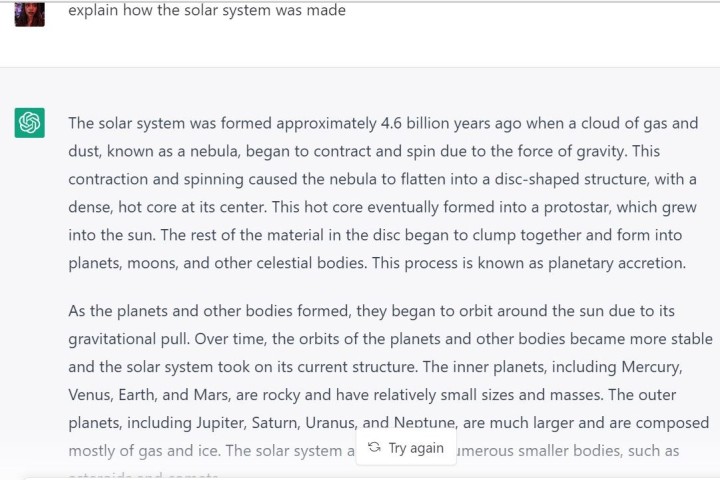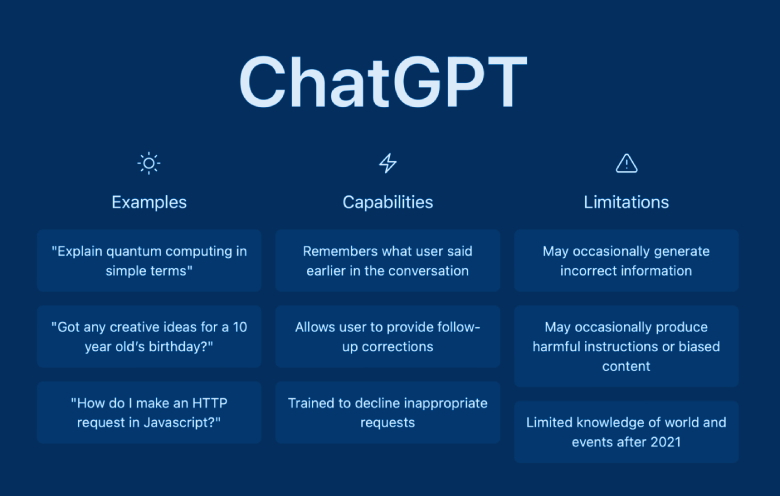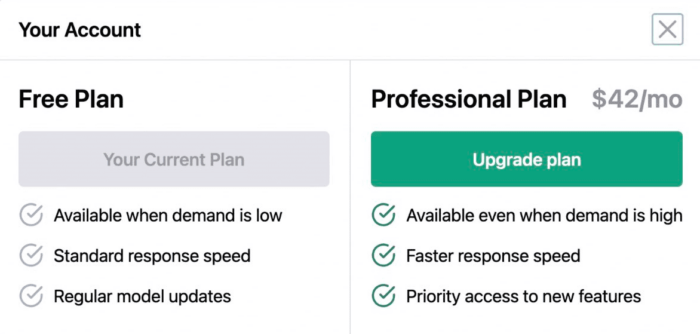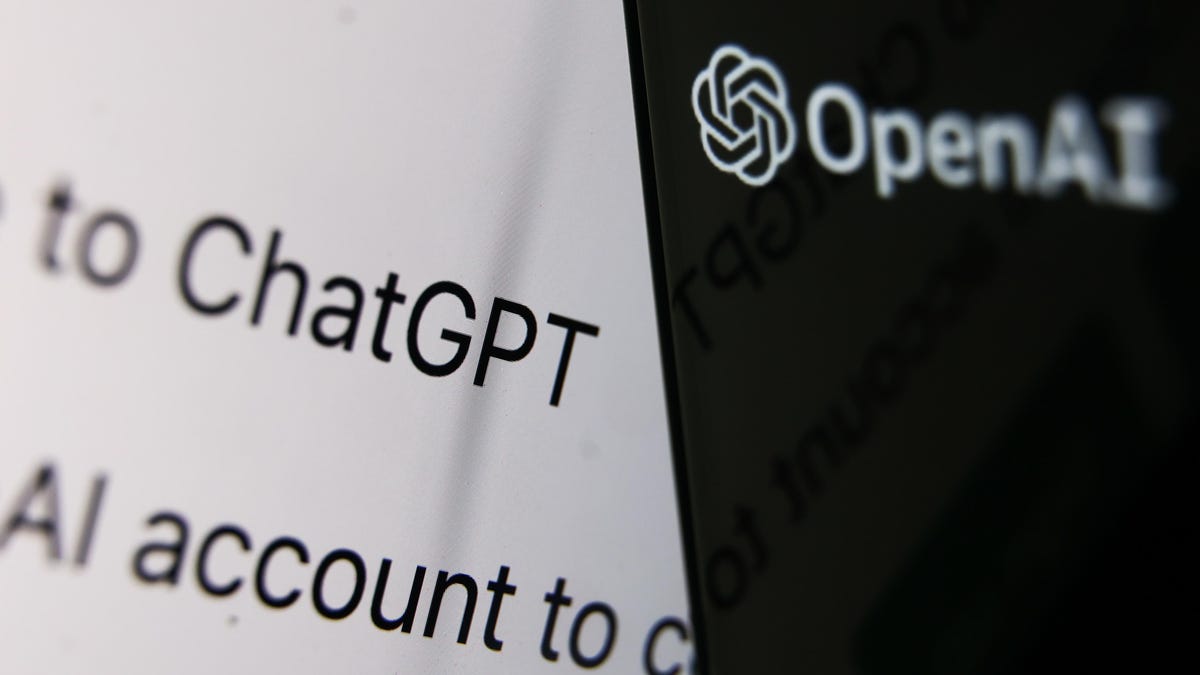What is ChatGPT? Research about ChatGPt,How ChatGPT works and how to use it?
What does ChatGPT mean?
ChatGPT (Chat Generative Pre-trained Transformer) is a sophisticated machine learning model capable of performing natural language generation (NLG) tasks with such a high level of accuracy that the model can pass the Turing test. (The Turing Test is an assessment devised by Alan Turing in 1950 to determine whether a person can tell if they are communicating with a computer program after five minutes of conversation.)
ChatGPT is a large language model chatbot developed by OpenAI based on GPT-3.5. It has a remarkable ability to interact in a conversational format and provide answers that can sound surprisingly human.
The tasks in which ChatGPT excels are:
- Providing answers to questions.
- Completing a given text or phrase.
- Writing fiction and non-fiction content through prompts.
- Generate human-like chatbot responses.
- Code generation of most programming languages.
- Translation of the text from one language to another.
- Perform calculations.
- Summarizing a given text.
- Classification of text into different categories.
- Text sentiment analysis.
- Produce text that summarizes information in tables and spreadsheets.
- Responding to user input as a conversation.
ChatGPT is built on a large language model called GPT-3 (Generative Pre-trained Transformer 3). A Large Language Model is a deep neural network that uses billions of parameters and is trained with petabytes of data. The model was developed by OpenAI, a research company founded by Elon Musk.
Technically, ChatGPT can be classified as a type of generative AI. After training, a generative AI model can produce similar – but not identical – outputs to the training data.
Who made ChatGPT?
ChatGPT was created by San Francisco-based artificial intelligence company OpenAI. OpenAI Inc. The non-profit parent company is the for-profit OpenAI LP.
OpenAI is famous for a deep learning model that generates images from text instructions called prompts.
The company’s CEO is Sam Altman, formerly the head of Y Combinator.
Microsoft is a partner and investor worth $1 billion. They jointly developed the Azure AI platform.
Large Language models
ChatGPT is a large language model (LLM). Large-scale language models (LLMs) are trained with massive amounts of data to predict exactly what words will appear in a sentence.
It was found that increasing the amount of data increases the ability of language models to do more.
According to Stanford University:
GPT-3 has 175 billion parameters and is trained on 570 GB of text. Its predecessor, GPT-2, was more than 100 times smaller with 1.5 billion parameters.
This upscaling drastically changes the behavior of the model – GPT-3 can perform tasks it was not explicitly trained on, such as translating sentences from English to French, without training examples.
This behavior was mostly absent in GPT-2. Furthermore, for some tasks, GPT-3 outperforms models trained explicitly to solve those tasks, although it falls short on others.
LLMs predict the next word in a series of words in a sentence and subsequent sentences – like auto-completion, but on a mind-bending scale.
This ability allows them to write paragraphs and entire pages of content. But LLMs are limited because they don’t always know exactly what a person wants.

How is ChatGPT trained?
GPT-3.5 was trained on a large amount of data about code and information from the Internet, including sources such as Reddit discussions, to help ChatGPT learn to communicate and achieve a human-like response style.
The technology was also trained using human feedback (reinforcement learning with human feedback) so that the AI understands what humans expect when asking questions. Teaching LLM this way is revolutionary because it goes beyond simple teaching to predict the next word.
The engineers who built ChatGPT hired contractors (called taggers) to rate the outputs of the two GPT-3 systems and the new InstructGPT (a “sibling model” of ChatGPT).
Because of that training, ChatGPT may challenge specific questions and leave out parts of the question that don’t make sense.
Another research paper shows how they trained AI to predict what humans prefer.
The researchers found that the criteria used to rank AI natural language processing output resulted in machines scoring well on these criteria, but not in line with what humans would expect.
Limitations of ChatGPT
ChatGPT is specifically programmed not to provide toxic or harmful responses. Therefore, he will avoid answering these types of questions.
An important limitation of ChatGPT is that the output’s quality depends on the input’s quality. In other words, standard instructions produce better responses.
Another limitation is that because it is trained to give answers that are correct for humans, it may provide solutions that are not correct.
Is ChatGPT free to use?
ChatGPT is currently free to use.
The chatbot is currently open for users to try out answers and provide feedback so the AI can better answer questions and learn from its mistakes.
There is a contest with a prize of $500 in ChatGPT credits to encourage people to rate the answers.
Teaching how to use ChatGPT
ChatGPT is available through a web page, so no download is required. Even though app stores are full of fake versions, OpenAI has yet to release an official app.
How to use ChatGPT

For example, entering “explain how the solar system was made” gives a more accurate result with more paragraphs than “how was the solar system made”, even though both questions provide relatively accurate results. You also have the option to make more specific entry requests for an article with a certain number of paragraphs or a Wikipedia page. For example, you can request the program: “Write a 5-paragraph article about the Python programming language.” It is better to enter your requests in English.
The generator will execute the instructions in detail if enough information is available. Otherwise, it is possible that ChatGPT will start answering questions with incorrect information. OpenAI notes that these cases are rare. The brand also notes that ChatGPT has “limited knowledge of global events after 2021”.
How to create an account in OpenAI
Using the ChatGPT chatbot is relatively simple; all you have to do is type your text and get the information. However, OpenAI requires an account before you can use any of its tools, so if you don’t have one, you’ll need to register. You have the option to sign up with a Google or Microsoft account.
Otherwise, if you have any other type of email, you can enter it manually. After this, you must enter a phone number; Then you will receive a confirmation code that you enter on the registration page to complete the settings.

ChatGPT Requests: What can be asked from ChatGPT?
It can be said that the most fun part of the story is here. Since its launch, people have been experimenting to discover everything the chatbot can and can’t do – and some of the results have been surprising.
Learning the types of prompts and follow-up messages that ChatGPT responds well to requires experimentation. As we’ve learned to get the information we want from traditional search engines, getting the best results from ChatGPT can take a while.
It all depends on what you want from it. For starters, try using it to write a blog post or even code if you’re a programmer.
Trying it yourself right now is better if you want to be surprised by its power.
Using ChatGPT to write essays and solve student assignments
Writing essays and solving tasks for students is one of the most prominent examples where ChatGPT can become a problem. ChatGPT may not write this article very well, but it is very easy to use for writing articles.
Teachers, school administrators and developers have already found various ways to solve this problem and ban the use of ChatGPT in schools. Others are more optimistic about how ChatGPT can be used for teaching, but plagiarism will undoubtedly continue to be a crisis in education. There are ideas on how ChatGPT can watermark its text and fix this plagiarism problem, but as of now, ChatGPT is still incredibly difficult to detect.
ChatGPT recently launched a new version of its plagiarism detection tool, hoping to address some criticism surrounding how people use text generation. It uses a new feature called AI text classification, which works in a way familiar to other plagiarism software. According to OpenAI, however, the tool is still in development and is “imperfect”.

Is ChatGPT the new competitor of Google?
Google has been trying for decades to do what ChatGPT can do now, and the chatbot has reportedly set off a “code red” at Google. In response, Google announced that it would slowly roll out its rival Bard AI, which will be added to Google Search over time. More competitors of this ChatGPT are expected to appear in the coming months.
ChatGPT works its way into search as well. Microsoft announced it is bringing ChatGPT to Bing and its full Edge browser. It is now available for testing and uses an advanced version of the AI model available in ChatGPT.
ChatGPT does not appear to replace Google. However, AI chatbots like ChatGPT seem vital to search going forward.
Tips on ChatGPT
Who owns ChatGPT?
ChatGPT is developed by OpenAI, an artificial intelligence company based in San Francisco. The current CEO of this company is Sam Antman.
How many active users does it have?
ChatGPT crossed the one million user mark within five days of its release. The number of ChatGPT users is estimated to be in the millions.
How many requests can ChatGPT process per hour?
There is no specific limit to the number of ChatGPT requests per hour. It entirely depends on the computing resources required by ChatGPT to process the request and provide the response. However, depending on the complexity of the tasks, it can process several hundred to several thousand requests per hour.
How is it taught?
ChatGPT is a significant language model trained using supervised fine-tuning and reinforcement learning from human feedback (RLHF).
Publication date?
A research preview version of ChatGPT was released on November 30, 2022, by OpenAI.
1. ChatGPT attracted 1 million users in one week
OpenAI, a San Francisco-based AI research and deployment company, launched ChatGPT as a research preview on November 30, 2022. ChatGPT crossed the 1 million user mark within five days of its launch. OpenAI founder Sam Altman confirmed the same via Twitter.
The company also released an improved ChatGPT embedding model on December 15, 2022. The user base is also expected to exceed 1 billion by the end of 2023.
2. OpenAI worth $29 billion after ChatGPT
OpenAI was reportedly in talks to sell the company’s existing shares in a tender offer following the success of ChatGPT. The value of this startup is about 29 billion dollars despite little or no revenue.
3. More than 300 million monthly visitors to the OpenAI website
ChatGPT is taking the internet by storm after its launch in November 2022.
According to data from Similar Web, Openai.com had 304 million hits in December 2022, up from just 18 million in November 2022.
4. OpeAI is monetizing ChatGPT
ChatGPT research preview is free for everyone. This company is running a professional ChatGPT plan.
As of January 21, 2023, many users reported an option to select a plan when accessing ChatGPT.

5. Target revenue of 200 million dollars per year
One research predicted that ChatGPT will generate $200 million in revenue in 2023 and propel the company to $1 billion by 2024.
6. The world’s largest neural network that powers ChatGPT
ChatGPT is a significant language model of the GPT-3 series, well-tuned and trained by human AI trainers. The language model was trained using only 570 GB of textual data collected from various sources on the Internet.
It is the largest language model learned in human history in artificial intelligence with about 175 billion ML parameters.
7. Limitations
ChatGPT has self-declared platform limitations. Internet users also saw some problems while using ChatGPT. Some limitations of ChatGPT are:
- Sometimes it produces incorrect information.
- It does not know about world events after 2021.
- It cannot access the internet and, therefore, cannot provide fresh data.
- Answers are not always reliable and occasionally biased.
- It can only process a limited number of requests or requests per hour.
8. Teaching the ChatGPT language model
ChatGPT is a large-scale language model (LLM) of the GPT-3 series, trained using supervised fine-tuning and reinforcement learning from human feedback (RLHF).
Some of ChatGPT’s exciting stats and facts about its training include:
- The training dataset contains more than 570 GB of text.
- The model was fine-tuned using several gigabytes of data sets.
- The educational model has about 24 layers.
- The number of attention heads is about 96.
- The training process uses 8 NVIDIA V100 GPUs.
- This technology is trained on Microsoft’s Azure AI supercomputer technologies.
9. Microsoft makes a bet: $10 billion deal
In 2019, Microsoft partnered with OpenAI and invested $1 billion to build general artificial intelligence. The tech giant plans to invest an additional $10 billion in the growing AI company, bringing OpenAI’s value to $29 billion!
It has also been reported that Microsoft plans to use OpenAI’s ChatGPT with Bing, its search engine, to compete fiercely with Google.
10. OpenAI statistics and facts
- OpenAI was founded on December 11, 2015 with headquarters in San Francisco, California.
- Elon Musk was one of the founders of OpenAI, who left the company in 2019.
- Some notable OpenAI products include OpenAI Five, ChatGPT, and DALL-E.
- At $29 billion, OpenAI is the sixth most valuable company in the United States.
- The New York Department of Education banned the use of ChatGPT due to the risk of inciting students to cheat.

The future of ChatGPT
ChatGPT, a groundbreaking advancement in artificial intelligence, has given unprecedented power to every internet user in the past few weeks. This has made it very popular, and has a million users in just five days. OpenAI released the first consumer-oriented AI product with endless capabilities, from writing articles or writing code to building full-fledged apps and passing professional-level tests.
Chatbots have been around for decades, with bots like Siri and Alexa acting as virtual assistants. They can do quick searches like “Will it rain tomorrow in Bushehr?” to do or “What is 2+2?” ChatGPT has the unique ability to answer abstract and more open-ended questions in great detail. Its capabilities are unique, but it can potentially be a huge threat to society’s well-being.
While there are concerns about this rapidly progressing issue, it is by no means stopping or slowing down. Microsoft CEO Satya Nadella stated in an interview with the Wall Street Journal that he fully intends to use ChatGPT functionality in Microsoft’s developing products. As these functions are commercialized, these AI capabilities will become commonplace. In the past, Microsoft invested $1 billion in Open AI, and with the release of ChatGPT-3, it invested an additional $10 billion.
There’s no doubt that the tech world is obsessed with ChatGPT right now, and it’s not slowing down anytime soon. ChatGPT-4, the next iteration of the model, will significantly improve the accuracy and functionality of ChatGPT. There is no exact release date yet, but the New York Times reported that it will be released in the first quarter of 2023.
But the bigger breakthrough will be how ChatGPT integrates with other apps. Microsoft reportedly made a multi-billion dollar investment in ChatGPT that is already starting to pay off. The first integration was in Teams Premium, which featured some OpenAI features for automating tasks and providing transcripts. With ChatGPT now available on Bing, it’s only a matter of time before we see other ChatGPT and OpenAI technologies being used in applications like PowerPoint and Word.
Finally, if you think AI is weird right now, just wait until it enters applications used for work and school. We don’t know how or when this will take off, but it’s certainly an important part of ChatGPT’s future.











